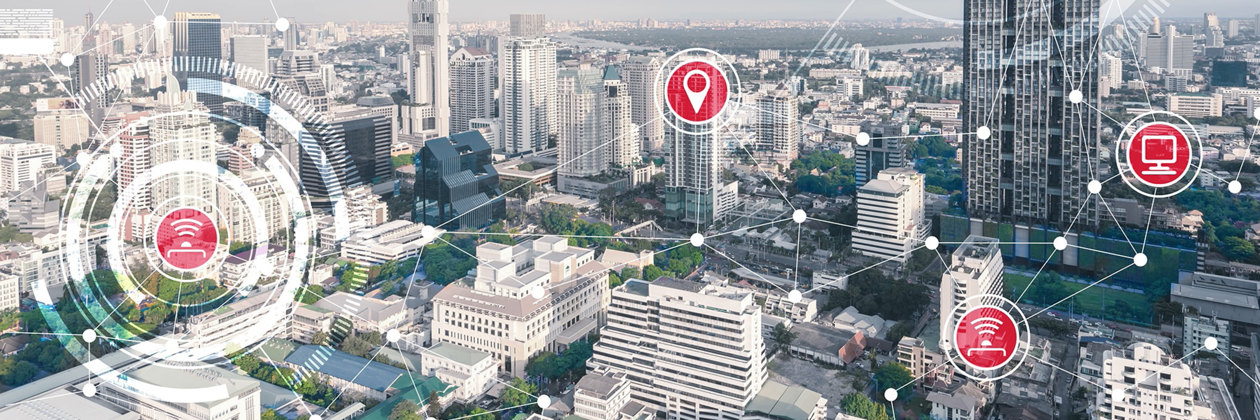What is LoRaWAN?
LoRaWAN stands for “Long Range Wide Area Network” and is a communication protocol and wireless technology designed for long-distance ranges. It connects battery-powered devices over extensive distances, making it ideal for applications in building automation.
The protocol comprises several key components: end devices, such as sensors and actuators; gateways, which relay data to the network server; and network servers, which process and manage the data. This architecture supports scalable and cost-effective deployment and operation across diverse environments.
LoRaWAN in building automation
Data transparency is crucial for maximizing energy efficiency in building automation, especially in smart buildings. LoRaWAN provides a wireless range and building penetration, allowing a single gateway to cover an entire business complex with associated premises. Since IoT sensors and actuators transmit minimal data, a single gateway can handle numerous sensors, making LoRaWAN integration cost-effective.
Low-power data transmission also supports the energy-efficient operation of battery-powered sensors and actuators, with battery life often reaching up to 15 years. This minimizes maintenance and facilitates quick retrofit implementation without additional cabling.
For the integration into the existing building automation system, gateways typically feature standardized interfaces such as Modbus, enabling seamless data transfer back to the control system.
Summary of key features
- Long range: LoRaWAN can achieve ranges of up to 50 km under ideal conditions. Typically, it covers about 3 km in urban areas, 5 to 10 km in suburban areas, and up to 15 km in rural areas, allowing one gateway to cover large areas or buildings effectively.
- Low susceptibility: LoRaWAN is resistant to interference, with sensitivity values reaching up to -137 dBm. This allows signals to penetrate multiple walls and reach basement levels.
- Extended battery life: The low energy consumption of LoRaWAN sensors and actuators supports a long battery life, lasting up to 15 years.
- Cost-effective establishment: Due to its long range and penetration, fewer gateways are required to establish a private network, reducing overall setup costs.
- Future growth: LoRaWAN's popularity is increasing on a global scale, reflecting its expanding adoption and use.


